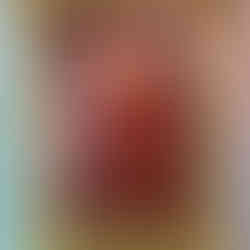Pwe Hla, also known as Pwe Hla Village in Danu Region in southern Shan State, is now a thriving town. It has been 260 years that Pwe Hla was built and it can be said that it is a very long-lived area. The town is also peaceful on its own. During my visit, I noticed that there was a lot of natural beauty in the area. I assume that it has the beauty of nature the travellers haven’t seen yet. I went trekking near its environment and also took a look in the town and market.
The region owns various kinds of flower and vegetable. Speaking of Pwe Hla, in this article, I am going to tell you my unplanned visit to Pwe Hla Haw Nan while on a trip to Pindaya.

Pwe Hla Haw Nan
During my trip to Pindaya, some local more talked about Pwe Hla Haw Nan than Pindaya Haw Nan and it makes me want to visit Pwe Hla Haw Nan. I felt profound and enjoyed it when I got there. The building structure of Pwe Hla Haw Nan is unique. It feels like it has stone walls, unlike any other Hall Nan. It is said that the Indians created the Haw Nan by carving gravel. The carpenters were from China. One unique thing about the Haw Nan is that the building has a European-style look with the Myanmar interior decorations. This nearly 120-year-old Haw Nan is said to be built in Japanese rule in Myanmar. The Haw Nan was the palace of Saopha Sao San Mya, and we can see the photographs of the Saopha and his family and relatives in black and white colours.

There are altogether 20 rooms, ten rooms in upstairs and 10 in downstairs in the 400 square feet wide Haw Nan. Except for some slight damages in some place, the entire Haw Nan is still in a perfect condition. The rooms don’t have much light because it has not been systematically transformed yet into a museum. The things inside of it are also found in a state of disrepair with dust like a warehouse. As I looked around the room, I could guess the conditions of that time. The room where the Saopha lived, the bed and the type of cord used in those days are still there. The door handles are also unique.

Even though the other rooms are left as such, a small place where Grandma Daw Sao Mya Aye lived at the back entrance of the downstairs and the Buddha shrine hall was cleaned. The Buddha shrine was there since the palace was built and the photographs on the wall of the living room in upstairs are the real history, showcasing the first Saopha to the last one.
I personally prefer the exterior design of the Haw Nan. Grandma Daw Sao Mya Aye whom I met during my visit is the last daughter among eight children of Saopha and. Despite her age of being 90, I noticed that she was relatively healthy and active. The last daughter was a professor at the History Department at Taunggyi University and can speak English fluently with clear pronunciation. Due to her age, she didn’t guide the tour when she was not in the mood but, when she wanted to, she used to explain the story of the Haw Nan.
I appreciated her explanation and hospitality as it was not the public museum. It was sad to hear that she passed away on 16 September 2020. Of the relatives of Pwe Hla Saopha, U Sao Aung Mya, the former Chief Minister of Shan State, is still alive.

Notification to visitors
Let me kindly request you to be extra careful when visiting by not disturbing the family living in the Haw Nan since it is not yet a public museum.
When visiting
The Haw Nan is located in Pwe Hla Village around 8 miles from Pindaya. It can be easily searched in Google Maps and also can be found on Aung Ban- Pindaya road if you are going from Kalaw, Aung Ban.

Of all the centuries-old Haw Nans, Pwe Hla Haw Nan is the one that amazes anyone who has ever been there with its well-built and unique design. Although it will be nice to be transformed into a museum with good maintenance, the family’s desire is more important. I want to suggest to pay a visit to nature-based places in Pwe Hla while the trip to Pwe Hla Haw Nan.
Have a nice & pleasant trip to you all!
Thiha Lu Lin (Thiha, the Traveller)
This article was published on "The Global New Light of Myanmar" daily newspaper.
Photo :: Thiha Lu Lin, Aung Min Maw
Camera :: SONY Alpha 7II with 16 - 35mm, Samsung Galaxy Note9
Photos are modified in Lightroom by Thiha Lu Lin
Translated by Ei Phyu Phyu Aung.
-03.png)








































Комментарии